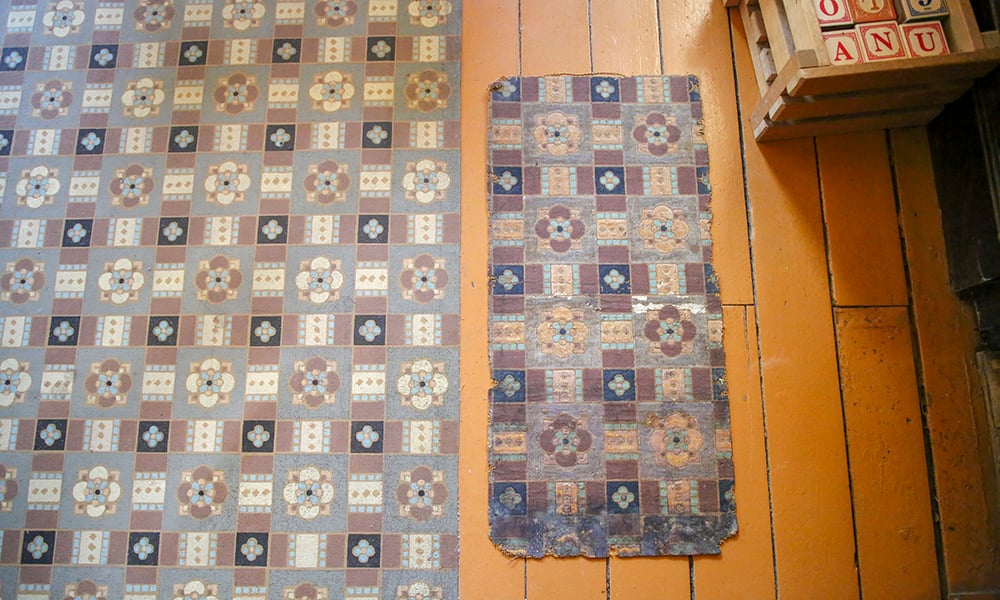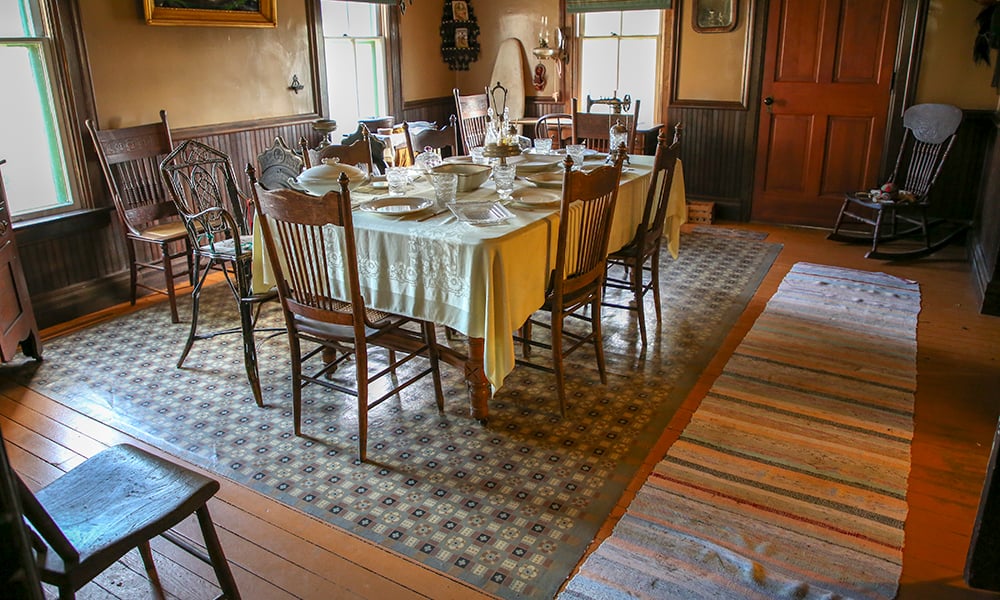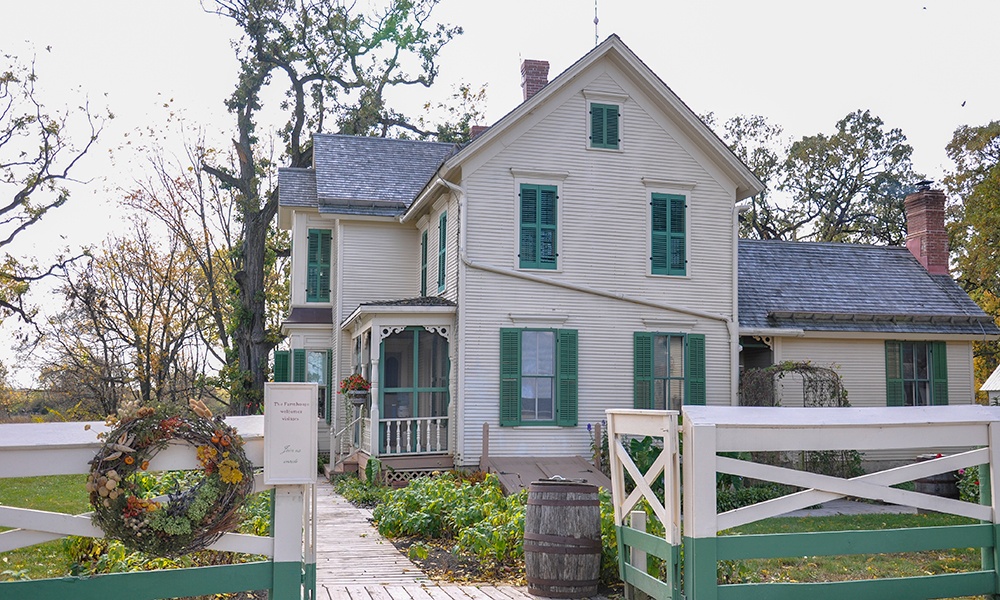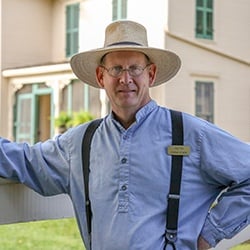
The oilcloth on the dining room floor at Kline Creek Farm's farmhouse museum could be easily overlooked. In fact, we planned it that way. It is meant to fit in as just one more part of the farmhouse, but it is really a handcrafted and very valuable work of art.
In the 1890s oilcloth was used to cover wood floors and make them easier to keep clean. When family came in for their noon dinner after working in the fields or with farm animals, their boots could get very dirty. An oilcloth made it easy to sweep up the dirt and keep your room looking clean. You may call it an early laborsaving device.
An oilcloth is simply a cloth that was painted or oiled. It could be plain or fancy and you could make one yourself or buy one from a mail-order catalog like Sears. The 1895 spring/summer edition of the Montgomery Ward catalog lists an oilcloth that would cover your dining room floor for about $1.20. A heavier and fancier version would cost over $3. It was a simple and inexpensive way to cover your floor. I am sure that many were thrown away when they started to look worn. Since it is painted, the pattern is only on the surface and any scratch will show.
A scrap of the original farmhouse oilcloth (right) was used to reproduce the oilcloth on the left that now covers the floor under the dining room table.
Linoleum eventually replaced oilcloth on floors, making it that much harder to find oilcloth. When the farmhouse at Kline Creek Farm was being restored, someone found a scrap of a patterned oilcloth. That scrap was used to reproduce the oilcloth that now covers the floor under the dining room table. In 1989, the Cultivators, a support group that helped the Forest Preserve District restore the farmhouse, purchased the reproduction oilcloth. I was told they raised several thousand dollars in donations to have the cloth made. It was block printed all by hand. There are six colors in an alternating pattern and it's truly a work of art. It must have taken hours to make. We interpret it as a common oilcloth; very few people know how special it is and how hard it would be to replace.
The farmhouse museum is set up to look and feel like a home. We do not have Plexiglas walls or velvet ropes. There is no air conditioning, electricity or indoor plumbing. When you walk into the farmhouse, we want you to experience what it would have been like to be in an 1890s home. Having this authentic experience makes up for some minor damage to the oilcloth. Plus, the oilcloth would look a little worn if it were in an 1890s farmhouse.
To care for the oilcloth we vacuum it with our HEPA-filter vacuum and once a year we wash it with very mild soap and polish it with a curatorial wax that will not yellow. We have to be careful if small stones get underneath because it pushes up a small area and any rubbing can remove the thin painted design on top. 
In 2019, the oilcloth will be 30 years old and it still looks good. There is some damage from when someone used the wrong type of vacuum and the edges are curled from being stepped on one too many times, but it is still one of my favorite objects in the farmhouse museum. I hope you get a chance to tour the farmhouse so you can see the real beauty of the simple floor covering in the dining room just like we planned.
To see the oilcloth and farmhouse, visit Kline Creek Farm Thursday through Monday from 9 a.m. to 5 p.m. Farmhouse tours start on the hour 10 a.m. – 4 p.m. Check back with our “Nature’s Storytellers” blog to read more about our restoration efforts at the historic farmhouse museum at Kline Creek Farm. You can also subscribe to the blog to get it sent directly to your inbox once a week.
Other stories in the series:
Remodeling an 1880s Farmhouse Museum
Part 2: The Kitchen Wood-Burning Stove
Part 3: The Parlor Pump Organ

The 1880s farmhouse museum at Kline Creek Farm in West Chicago.
Keith McClow
